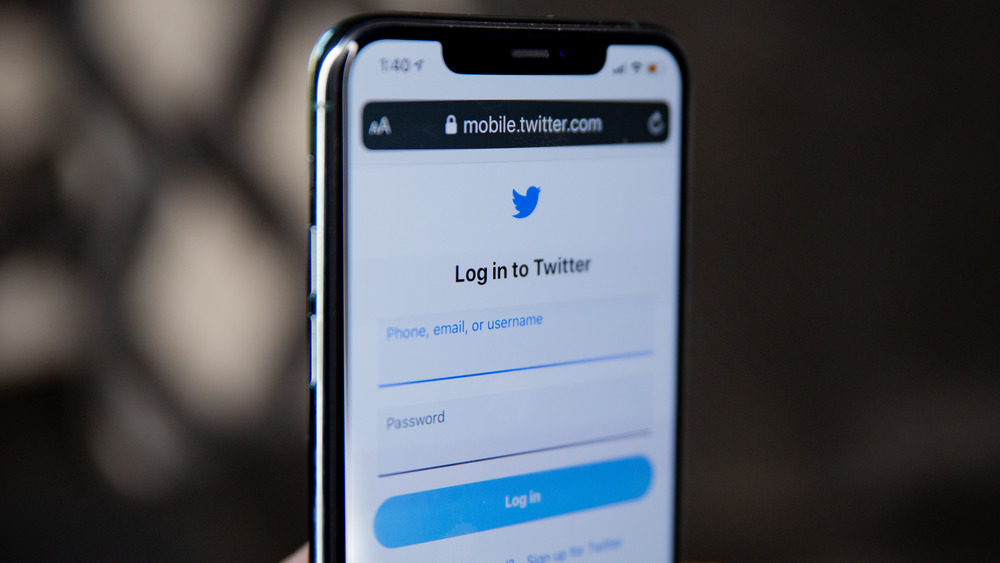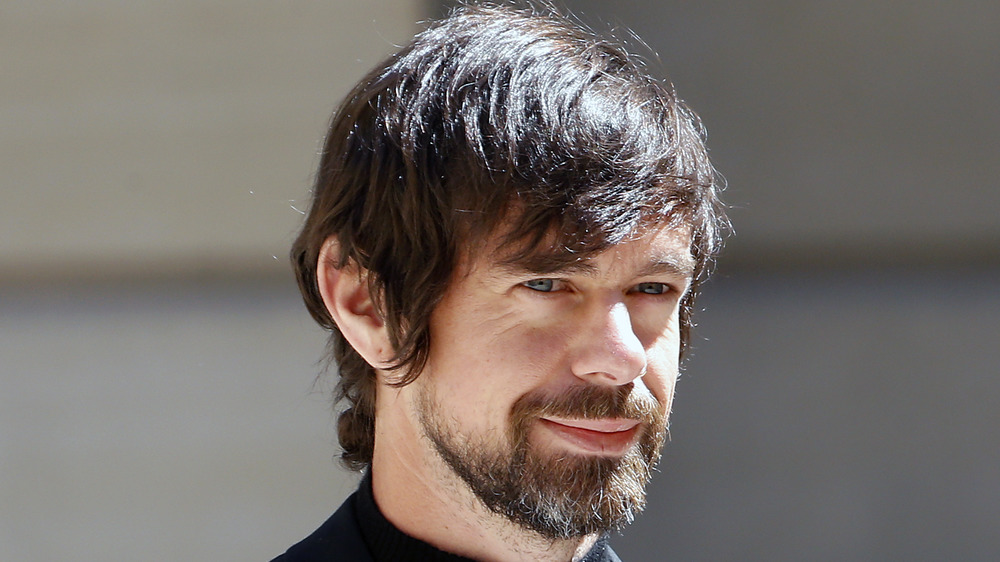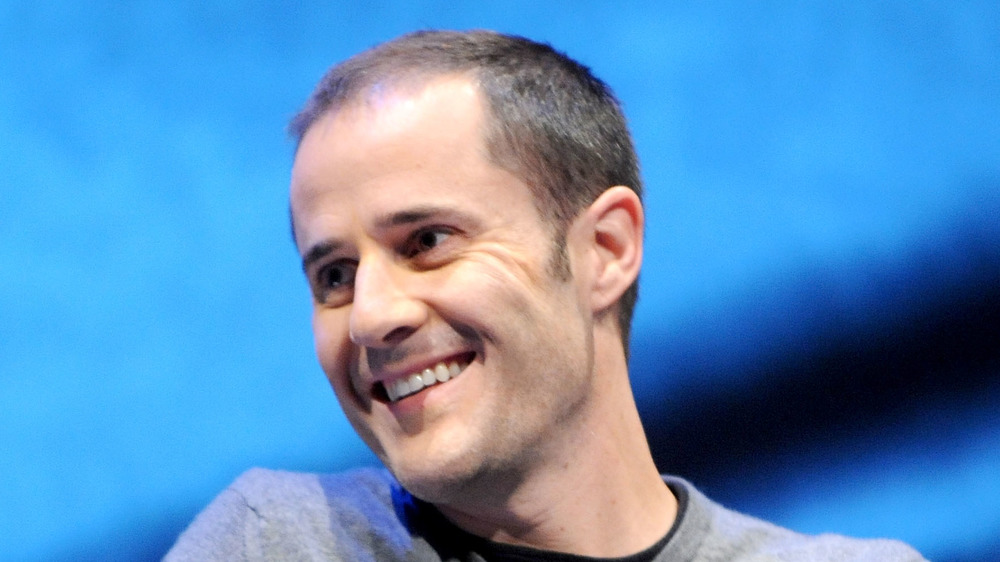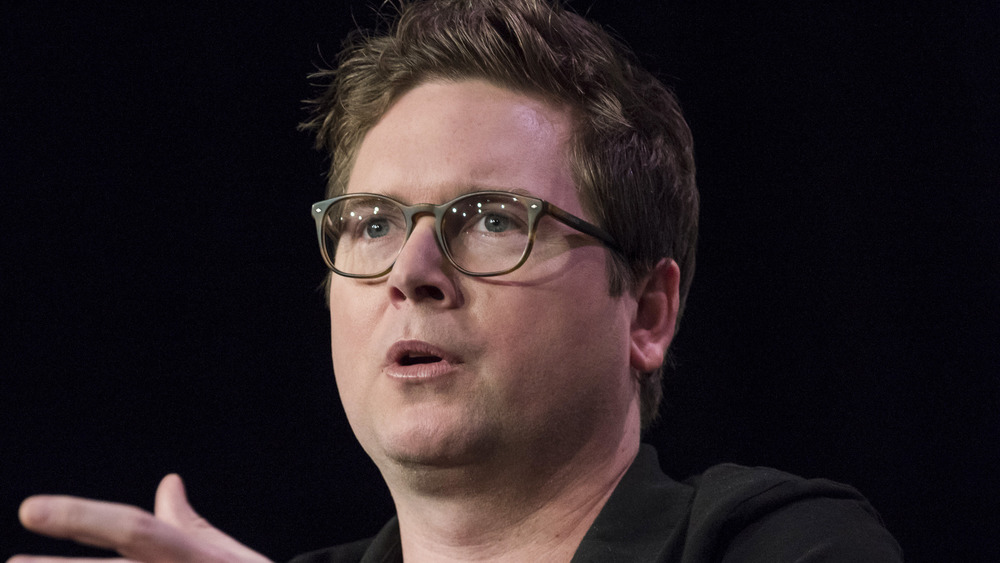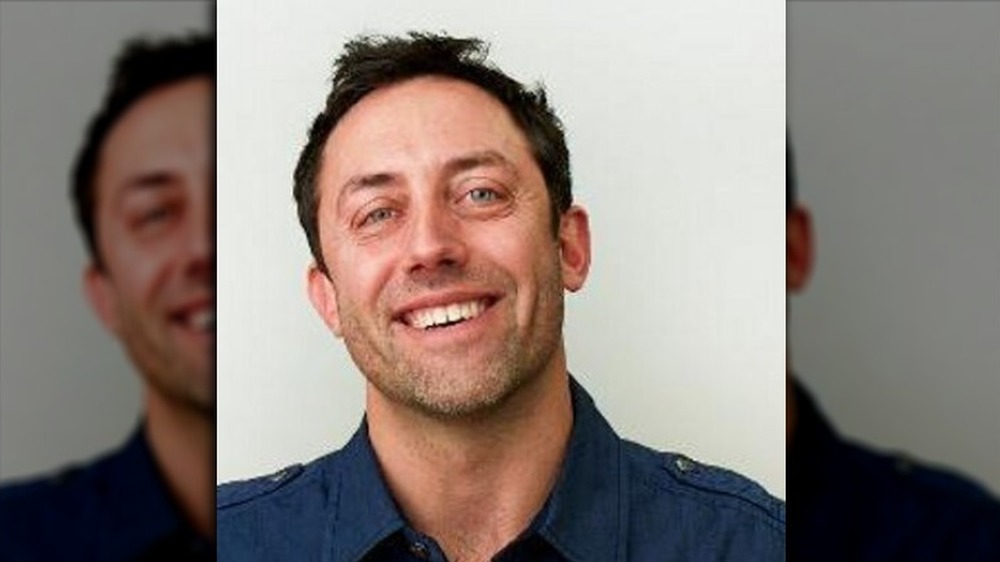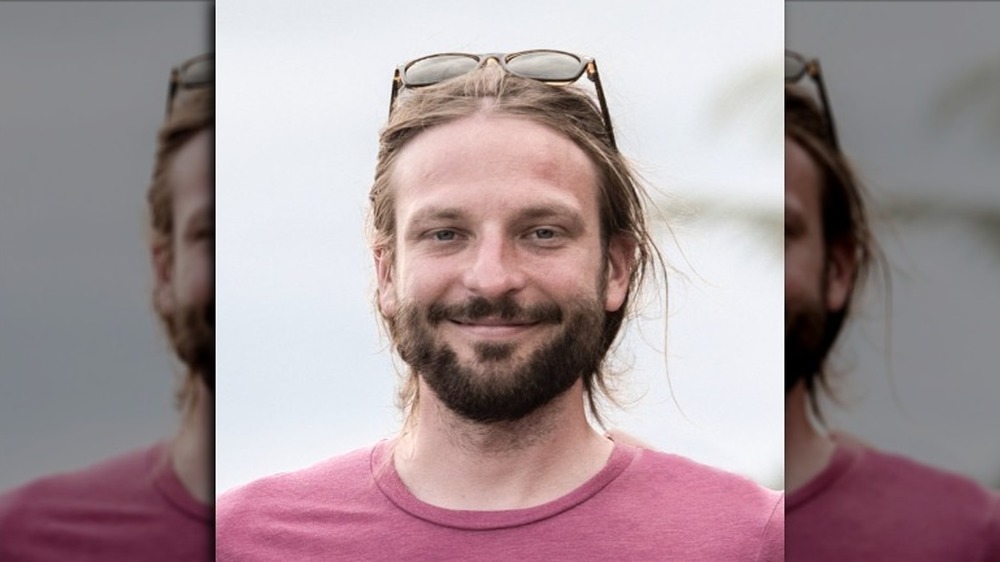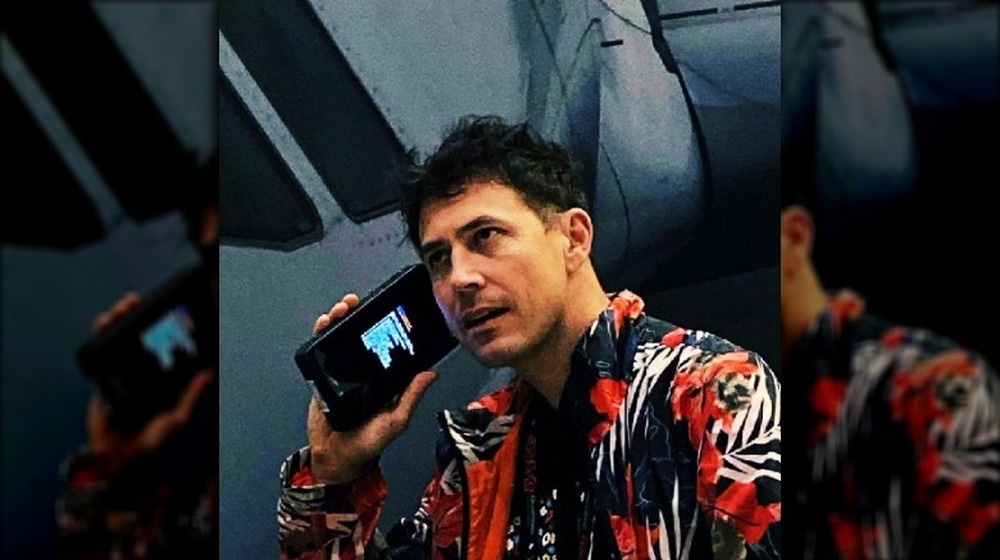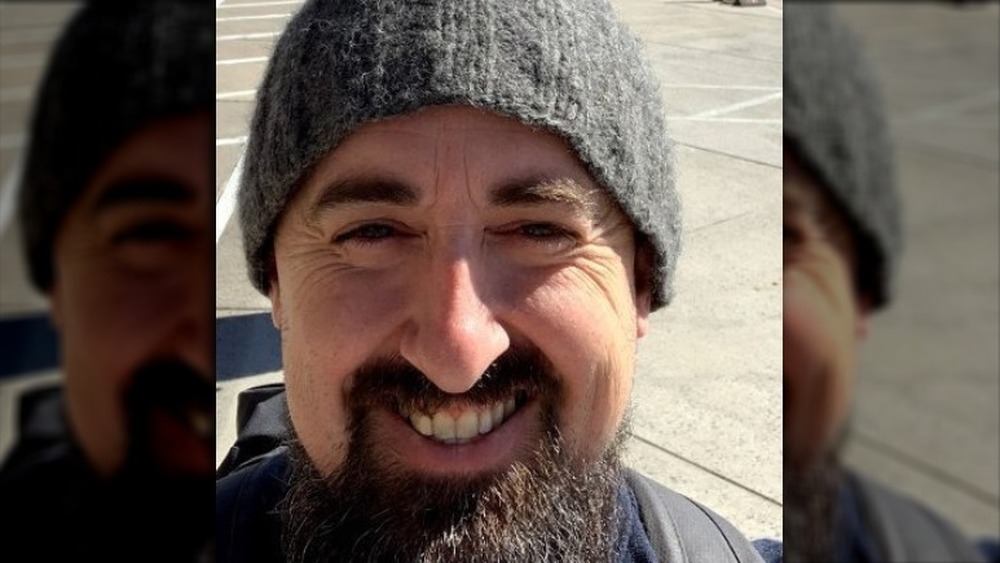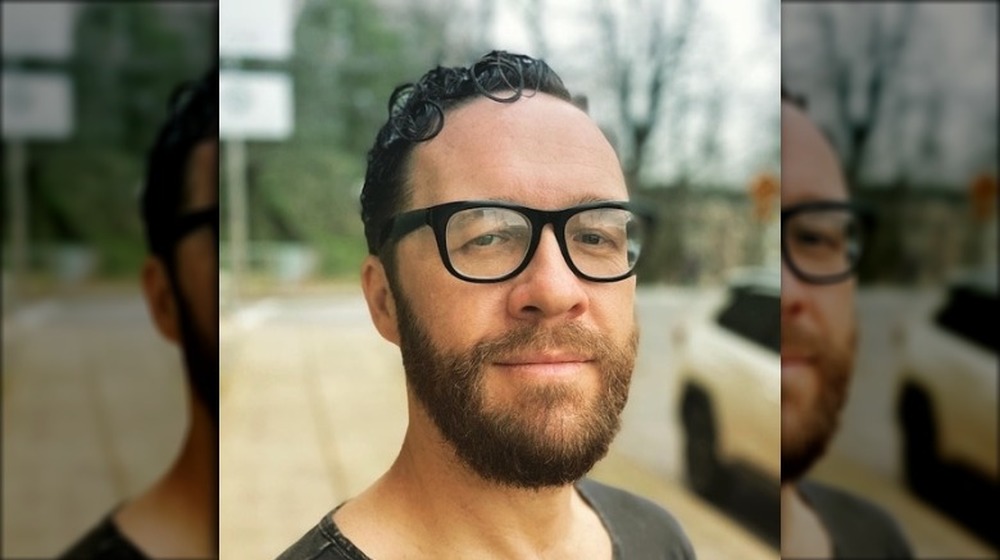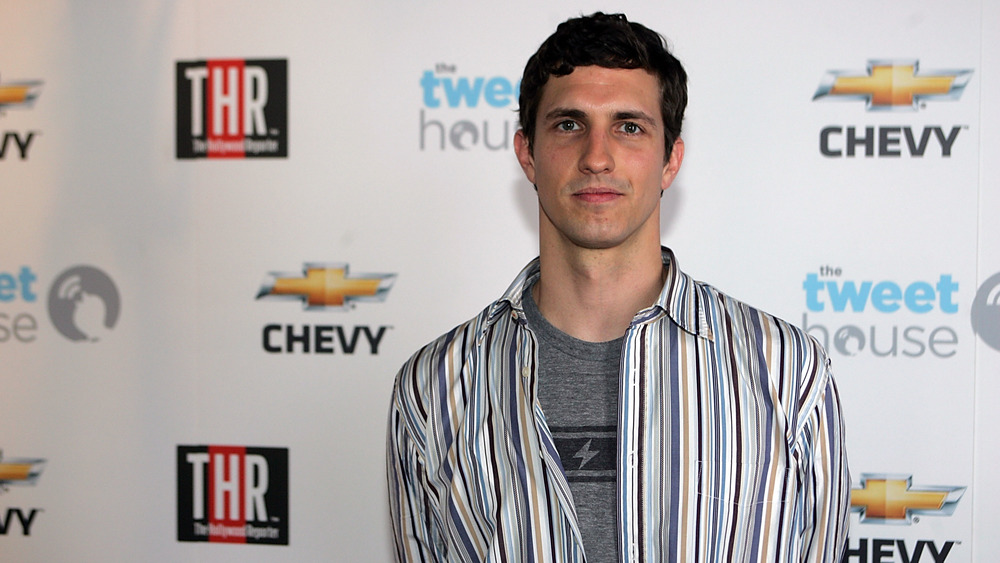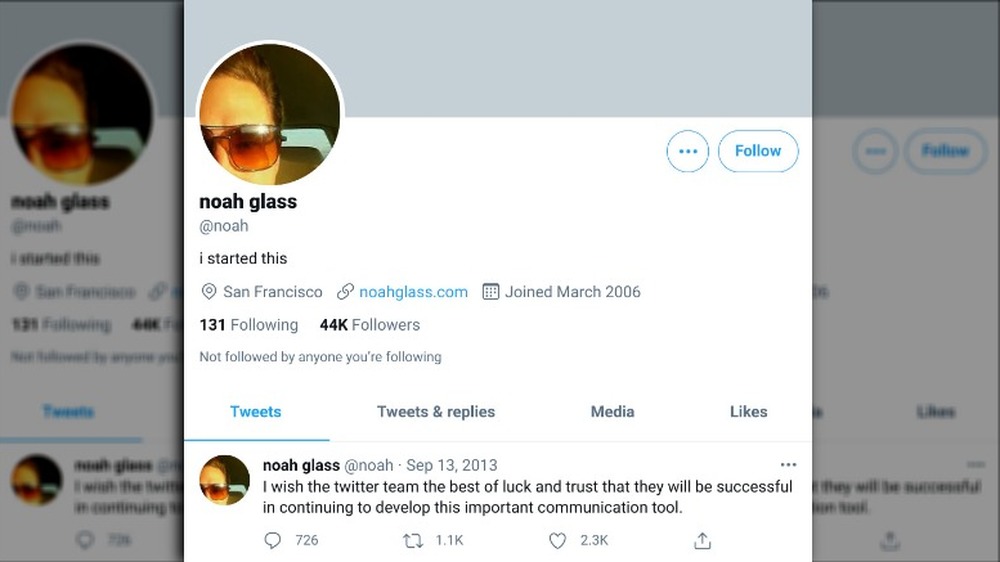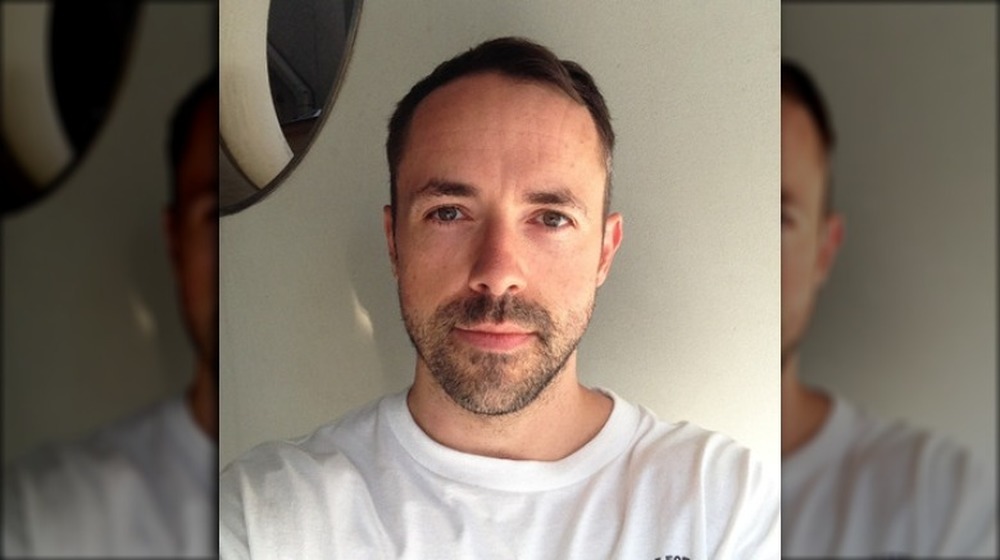What Twitter's First Employees Are Doing 15 Years Later
Fifteen years since its early days as a casual microblogging site, Twitter has grown to a powerful global force. A platform for all kinds of conversations and utilized by all types of actors, the social networking site is often the host to the world's trending topics and has become so influential in society that it is frequently under pressure for its content moderation policies.
What some people might not know is that, before Twitter was the force that it is today, it was just "Twttr," says History, a side idea that popped up at the podcasting platform, Odeo, when it was in desperate need of a new direction after Apple's podcasting efforts shook up its business. What is now a global social networking site started as an internal company site that quickly became addictive to early employees but also struggled a lot financially.
While there was a solid team behind the creation of Twitter, early struggles meant that many involved in its development were laid off and had to move on to different ventures, according to Business Insider. At times, the process got messy or harsh, with some co-founders being erased and others being excluded from getting stock options. Overall, though, most of the brains behind Twitter leveraged their experience and entrepreneurial spirit to develop and grow some of the brands of today. Fifteen years after its start, here's what Twitter's first employees are doing today.
Jack Dorsey, the two-time CEO
Credited with being the mind that the idea for Twitter first stemmed from, Jack Dorsey is the well-known co-founder and CEO of the microblogging site. While he's one of the few early employees that are currently still with Twitter, his career since the site's start has been a rocky one filled with uncertain growth and power struggles. According to The Verge, Dorsey was a desperate out-of-work programmer that applied to work at Odeo after being rejected by a shoe store. Hired as a low-level coder for Odeo, he brought up the foundational idea for Twitter with a few coworkers when the podcasting company needed a new direction. The Odeo team made Twitter into a reality, with Dorsey named its first CEO when Twitter was spun off as its own company in 2007.
Just a year later, Dorsey would be pushed out by the board led by Evan Williams. Williams then stepped in as CEO and Dorsey, though still the chairman of the board, moved on to start and be CEO of the mobile-payment company Square. Amidst leadership drama at Twitter, Dorsey rejoined the company in 2011 as an executive chairman. In 2015, the social media company's first CEO was once again back at the top, making Dorsey currently the CEO of both Square and Twitter. These days, Dorsey has been a big supporter of cryptocurrency, with his auctioning of the very first tweet as a non-fungible token (NFT) making headlines after receiving bids up to $2.5 million, reports Forbes.
Evan Ev Williams, from blogger to Twitter to Medium
Evan "Ev" Williams was already a bit of a celebrity in the tech world when he started investing in Odeo, the precursor to Twitter. Formerly the co-founder and CEO of Pyra Labs, the company that developed Blogger, the entrepreneur spent some time at Google as a program manager following Google's acquisition of Blogger in 2003, according to his LinkedIn profile. In 2005, Williams was one of the early investors in Odeo, heavily supporting its efforts to create a podcasting platform and eventually becoming CEO. When the "Twttr" project started showing promise, Williams co-founded Obvious Corporation, which was used to acquire Odeo and spin off Twitter as a new company. While he was initially a board member and investor, the tech entrepreneur eventually took over as CEO of Twitter after Jack Dorsey was pushed out in 2008.
In 2010, the Twitter CEO decided to step down and move on to other projects, though he was a board member until 2019, according to Forbes. Williams would once again find success as the founder of the popular online publishing platform Medium and has been CEO ever since. On the side, he's a founding partner of Obvious Ventures, "a venture capital firm focused on 'world positive' companies," as described on his Medium profile, and was a big investor in the vegan brand Beyond Meat.
Biz Stone, two-time Twitter employee
Biz Stone got involved with Twitter through Evan Williams, who he had worked with back when the two were working on Blogger and at Google, according to Britannica. From 2006, Stone was the creative director at Twitter but left in 2011 to work on a new venture called Jelly, an AI search service that leveraged users to answer the questions of those in their social network. For a brief period, the entrepreneur shifted gears a bit to work on a creative project when he directed a short film, as reported by SFGate. Stone also was constantly investing in new startups, backing his friend's ventures like "Slack, Square, Intercom, Beyond Meat and Blue Bottle Coffee" and co-founding Medium with Williams, according to The Twenty Minute VC: Venture Capital | Startup Funding | The Pitch podcast.
In 2017, Jelly was acquired by Pinterest, and Stone was asked by CEO Jack Dorsey to return to Twitter. The company was apparently in bad shape internally, with rules, ethics, and company morale doing a nosedive compared to its early days, as described by Stone in the interview with Harry Stebbings. He was tasked with making Twitter "a special place to work again" by leading its strategic vision and internal culture. These days, according to Startup Grind, Stone is focused on his venture capital investment firm Future Positive, which backs "startups that are improving the future of health, work, wealth."
Tim Roberts, the Bay Area advisor
Joining Odeo in 2005, Tim Roberts was the vice president of product and marketing throughout the process of Twitter being invented and launched. Similar to other early employees, Roberts left the social networking company in 2006, spending about five years as entrepreneur and CEO/founder of Infectious.com, an e-commerce site for products by artists, according to his LinkedIn profile. In 2010, the former VP took a similar position at a small eight-person company called Fitbit. As executive vice president of product and design and the "first non-founder exec to join the team," Roberts led the fitness tech company's design and development of its "mobile, web, and device experiences," helping grow Fitbit from an eight-person team to a public company with 1,800 employees.
After nearly seven years at Fitbit, the product expert continued down the field of digital health but in a more free capacity. Today, he's an independent advisor, board member, and consultant for a variety of different brands, including Rise Science, WayBetter, and Naturally Slim.
Blaine Cook, the sociotechnologist
Like most early employees of Twitter, Blaine Cook became involved with the social media company when it was still a side project at Odeo. According to his LinkedIn profile, Cook started as the lead engineer at Odeo for about a year until 2006, at which point his title changed to founding engineer at Twitter. During his time at Twitter, the "sociotechnologist" was notably one of the creators of OAuth, the widely adopted "technological standard that allows you to share information between services without exposing your password," as described by HP.
Leaving Twitter in 2008, Cook had short stints at Yahoo! Brickhouse and BT before co-founding and becoming CTO of Poetica in 2012. With his team at the London-based startup, a system that "lets editorial teams collaborate on content in real time a la Google Docs" was developed, says Variety, with Poetica being acquired by the publishing giant Condé Nast in 2016. Following his company, Cook simultaneously started working at Condé Nast as staff engineer, where he's been providing "social solutions for technological problems" ever since, according to his Twitter.
Adam Rugel, the digital media expert
Adam Rugel's role at Twitter in its early days was as director of business development, according to Business Insider, with Rugel making Twitter's 18th account. His time at the social media company was fairly short, with Rugel being there for just about a year before leaving to pursue his own venture, Trazzler, in July 2006. During his time at the Twitter offices, he and coworker Biz Stone had hatched the idea of Trazzler, a travel site that recommends destinations based on images you choose, as reported by Tech Crunch. Looking at his LinkedIn, Rugel was co-founder and CEO of Trazzler until 2012, at which point the site seemed to have officially come to an end.
After a very brief stint as co-founder of CheckMate.io, the entrepreneur took a turn into media with the acceptance of his position as senior director of digital media at ESPN in 2013 and then as director of partnerships, digital strategy, and initiatives at Condé Nast in 2016. Currently, Rugel is the vice president of The Seventh Spark Company, utilizing his digital media expertise as he oversees the company's efforts in providing "digital solutions for faith communities" through the building of mobile apps and advising with marketing.
Ray McClure, from Twitter to TikTok
Joining Odeo in late 2004 as an interactive developer, Ray McClure was one of the early team members that joined Odeo's "Twttr" project, according to his LinkedIn. He was behind the visualization of the social media site that was featured at SXSW 2007, a presentation that stole the show at that year's festival. After leaving Twitter in 2007, the developer worked with some other notable companies like Yahoo! Advanced Products Group, EA, and Google, while simultaneously starting his own studio in 2009 called Dreamboat.
As the owner and digital artist of Dreamboat for ten years, McClure worked on creating "immersive desktop, mobile, VR and installation experiences" for clients such as The New Yorker and Vogue Magazine, as described by Business Insider and LinkedIn. The digital artist also spent time sharing his skills as a mentor and instructor on creative coding for the Gray Area Foundation For The Arts. Today, he's circled back to being a part of one of the biggest social media apps out there, joining TikTok as it was blowing up globally in August 2019 as senior interactive engineer.
Tony Stubblebine, the engineer turned self-improvement coach
As vice president of engineering at the Odeo/Twitter offices, Tony Stubblebine managed the engineering team that made Twitter happen. In his own words on LinkedIn, his "contribution was to have the common sense to get out of Jack [Dorsey]'s way, to make sure he had the team he needed, and to keep people from bothering him." Like most other early employees, his time there was short, with Stubblebine leaving in 2006 to work on launching a slew of other early stage projects, including Wesabe, a personal finance app, and Social Workshop, a publisher of web products.
Around 2011, the engineer dove deeper into projects that resonated with his identity as a "self-improvement nerd," according to his Coach.me profile. In addition to helping out with the meditation app Calm, Stubblebine co-founded and became CEO of Life Worldwide, a goal-tracking app and community that became the foundation for his next venture, Coach.me. Stubblebine, or "Coach Tony" as he's referred to on Twitter, is now the co-founder and CEO of Coach.me, a marketplace that connects coaches and clients. His coaching site is also the root of the wildly popular Medium publication, Better Humans, as well as Better Programming and Better Marketing.
Evan (Rabble) Henshaw-Plath, the first employee
In November 2004, Evan Henshaw-Plath became the first employee to join Odeo, as he was signing on to be the "lead developer and architect in building Odeo's Ruby on Rails web application platform, a breakthrough in lowering the barriers of entry to programming," according to his LinkedIn. Before he knew it, he was leading the engineering team in the pivot from Odeo's podcasting focus to the creation of Twitter (via his website). His early role in the social networking site meant that his Twitter account was the 22nd account to exist, as reported by Business Insider.
Since leaving Twitter in 2006, Henshaw-Plath has put his skills to use both at large Fortune 500 companies and his own self-funded startups, as well as through his work as a researcher at the MIT Media Lab in the Center for Civic Media. These days, he's tapped into his experience at Twitter to be the co-founder and CEO of Planetary, a social media app that was released in October 2020. Designed as a humane decentralized social network, Planetary strives to be an alternative to social media giants like Facebook and Twitter by giving power and control back to the users.
Dom Sagolla, a technology pioneer
As mentioned on his LinkedIn page, Dom Sagolla started off at Odeo as the head of quality, overseeing all the testing and making sure the engineering of their Web apps was on point. When the "Twttr" project became a thing, Sagolla joined the original creative team behind it but was unceremoniously laid off in May 2006 and was completely left out of receiving any stock options, receiving no benefits when the company went public in 2013, according to Business Insider. Still, the early employee at Twitter used his inside knowledge to write 140 Characters: a Style Guide for the Short Form, a book that outlines the art of communicating through short-form writing, whether it is on social media, through texting, or otherwise.
Post-Twitter, Sagolla stayed close to the mobile app vertical and founded DollarApp, an iOS app-creation company that notably designed the Obama 2008 iPhone app and received praise from Steve Jobs. He was CEO of DollarApp from 2008 until May 2012, when the company was acquired by Chaotic Moon Studios, where Sagolla transitioned to being chief product officer until 2014. Throughout this period, the multi-faceted engineer also co-founded Developer Camp, an organization that empowers young software developers through a Hackathon camp, and was part of R&D teams at both academic and corporate labs, including MIT Media Lab and HP Labs. Today, he's the co-founder of Archipelo, an "intelligent code discovery platform for developers," and occasionally gives lectures as a public speaker on innovation and technology.
Noah Glass, the forgotten founder
It would probably be a surprise to most that the one who came up with its name would be the employee that got erased from its history. Noah Glass' role in the creation of Twitter was revealed by Business Insider through a series of interviews with early employees. Glass was the start of Odeo, the podcasting company that had to find a new product when Apple made their product obsolete with iTunes' podcasting platform. As the employees were brainstorming new ideas, co-founder Glass and web designer Jack Dorsey quickly connected over Dorsey's idea about a product where people posted statuses. The two, along with a contract developer named Florian Weber, presented the idea of "Twttr" to the company in February 2006. Glass came up with the name.
According to early employees, while Dorsey may have had the original idea for Twitter, it was Glass that passionately pushed and led the team to make it a reality. After months of working, imagine his shock when Evan Williams, CEO and the original investor in Odeo, bought the company from other investors and fired Glass. While no one knows exactly what happened, it's thought that the two had conflicting personalities, and there was tension over Glass making plans to separate Twitter from Odeo and be CEO.
Not much is known about Glass since he left. Outside of a brief interview in 2011 with Business Insider where he expressed his regrets, Glass has kept his head low in San Francisco.
Florian Weber, the contract co-founder
Hailing from Hamburg, Germany, according to Business Insider, Florian Weber was hired as a contract programmer back when Twitter was still just a project within Odeo. As he described on his official website, Weber worked directly with Jack Dorsey as the lead developer for Twitter, developing the app and building the public API. He's also to thank for his efforts in defining Twitter's iconic 140-character limit that lasted for over ten years before it was doubled to 280 characters in 2017 (via Tech Crunch). Despite his clear role as a co-founder of Twitter, Weber's contract worker status kept him from being offered stock options when the company went public.
Weber reportedly has no regrets about how things turned out, though, telling The New York Times that he was "very happy with [his] life." After leaving Twitter, he worked on a variety of other projects, including becoming co-founder and CTO of Amen, a social networking site that got backing from Ashton Kutcher, as reported by All Things Digital, before it was acquired in 2014. Today, Weber leverages his expertise and experience in his work as a freelance product, engineering, and data consultant for early stage projects.
